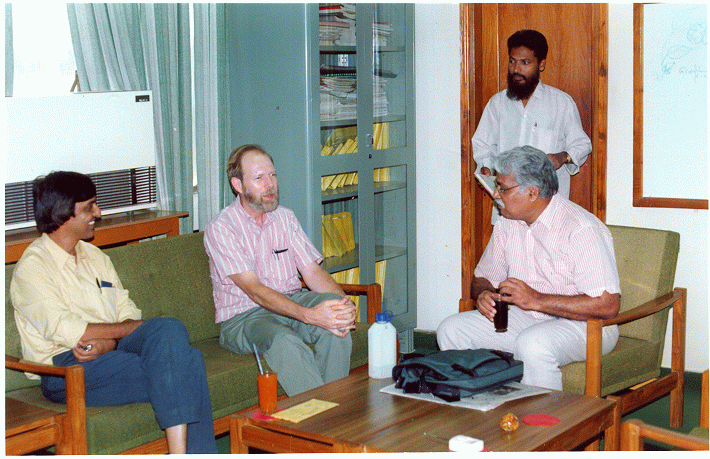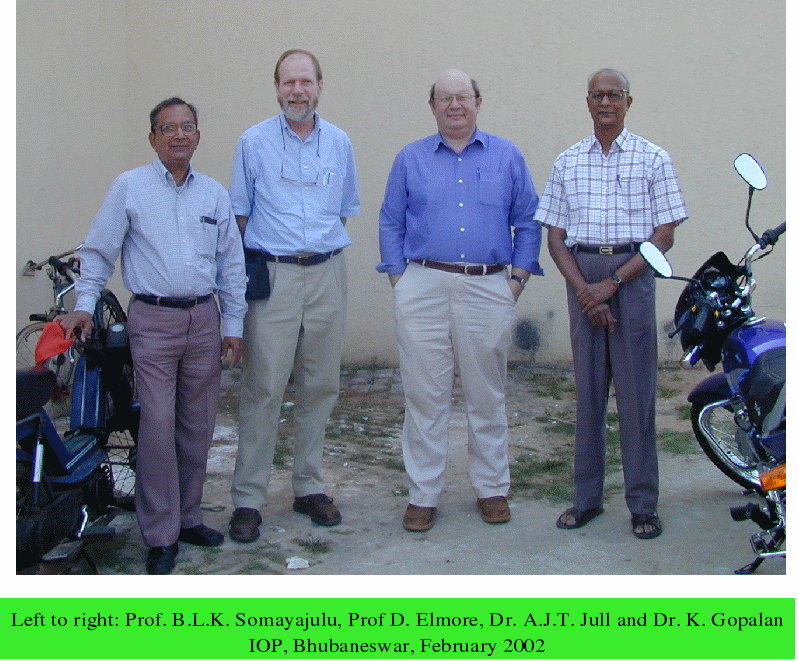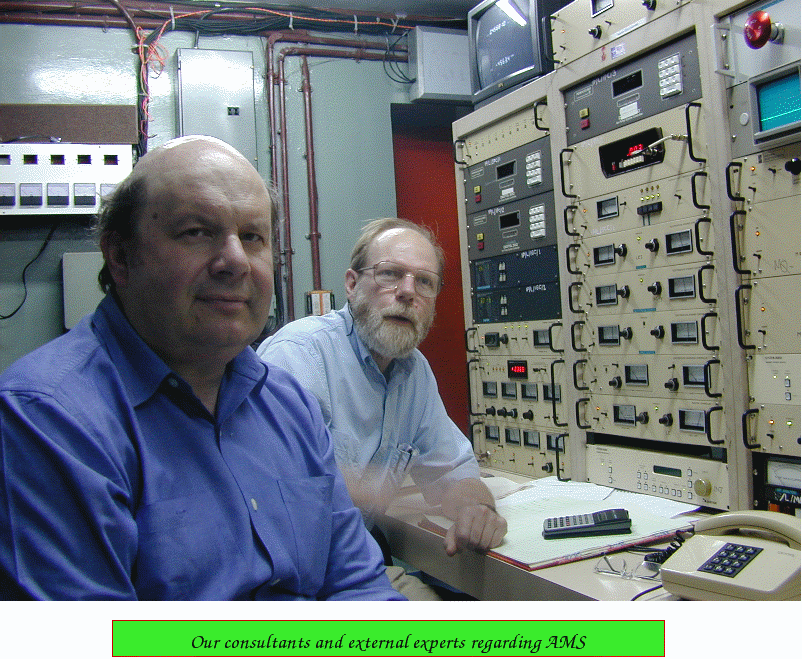
In 1996, primarily due to a lot pressure from users, it was
decided to put up a proposal for funding, regarding a possible
augmentation of the system for carrying out radiocarbon dating
using AMS. Prof. B. L. K. Somayajulu (from PRL, Ahmedabad) and
Dr. K. Gopalan (from NGRI), two of the most reputed researchers
of the country, joined hands with us in support of the proposal.
Prof. David Elmore, former Director,
PRIMELAB,
Purdue University , a
leader in the field of accelerator based techniques, was
contacted to be our expert advisor. He along with his colleage
Dr. Pankaj Sharma (another AMS expert) had been our collaborator.
The AMS proposal from IOP was then submitted to DST and after
a lot of deliberations it was decided to be funded jointly by
DAE
,
DST
,
DOS
and
CSIR
.
(Collaborators: D. P. Mahapatra, B. L. K. Somayajulu, K. Gopalan,
D. Elmore and P. Sharma)

Machine was augmented with a new fast switching injector consisting of a MC-SNICS (NEC, USA) sorce, a 45 deg Electrostatic analyzer with rotatable electrodes, a gap lens, a bouncer tube with three offset Faraday cups and a new 90 deg analyzing magent. On the high energy side the quadrupole magnet following the machine was replaced by an electrostatic quadrupole triplet. The chamber of the high energy analysing magnet was replaced by a new chamber which accommodates two beams (14C and 13C) with an FC fabricated at NGRI, Hyderbad. The augmentation was completed with the addition of a new dedicated AMS beamline at a 15 deg port of the switching magnet which also has a 15 deg cylindrical electrostatic analyzer. Priliminary data regarding 14C detection and counting with the old system were reported in AMS-8 at Vienna (Sep 6-10, 1999). However, first serious data, taken with the fully augmented system were reported in AMS-9 at Nagoya (Sep 2001). The results presented included data on standards (with 0.5 % accuracy), blanks (up to 5%) and some FIRI standards (with about 2 % accuracy). Since then a new sample preparation laboratory has been has been set up and is in operation.

